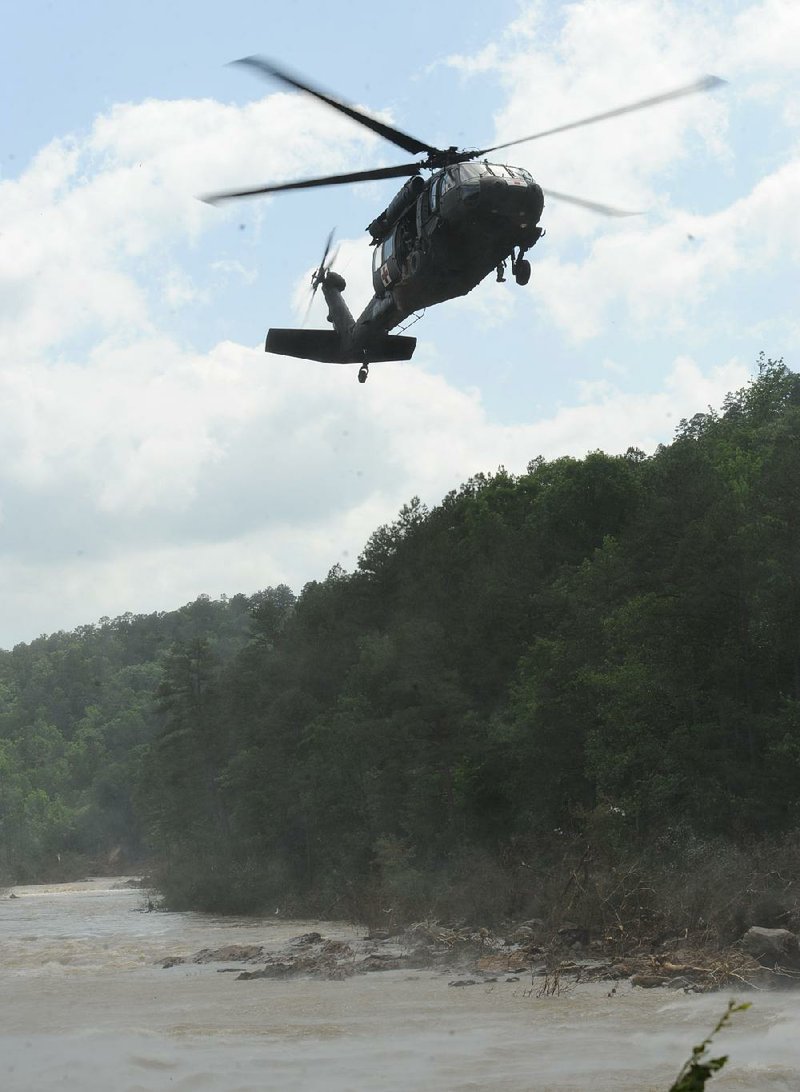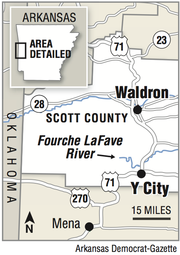It might take an act of Congress, but County Judge James Forbes is determined to do something to stem the Scott County flooding that left two lawmen dead, and to help agricultural production in the process.
Scott County Farm Bureau President Dan Wright, Forbes and others are beginning to discuss building a reservoir to slow the fast-moving waters that proved fatal to Sheriff Cody Carpenter, and state Game and Fish Commission wildlife officer Joel Campora. The two died while attempting to rescue two women from flooding in 2013. The women, 60-year-old Regina K. Shearn and 65-year-old Vivian Sue Reimer, also died.
"We all understand how serious this is," Forbes said. "We do need desperately some type of flood control system in the southern part of our county."
Ideally, the reservoir would be in the southwest portion of the county, near the Oklahoma border.
Wright said a reservoir would be especially beneficial to agricultural interests. At the Arkansas Farm Bureau's December conference, Wright, a poultry producer in the county, went from room to room speaking to legislators about the issue.
Flooding threatens farmers and producers in Scott County, he said. Additionally, the reservoir could provide a more reliable water source for agricultural interests in the region.
"We don't have any rural water in that part of the county," he said. "That water is piped in from Mansfield."
Three big obstacles stand in proponents' way. The first is money.
"The program that funded the flood control lakes back in the '60s hasn't been funded since then," Forbes said. "If the federal government does not fund the program, the state can't retrieve money from that program."
The second hurdle is land. Forbes said more than 80 percent of the land in Scott County is owned by the U.S. Forest Service.
"To get anything built in the forest, it would take an act of Congress -- literally an act of Congress," Forbes said.
Wright said much of the rest of the land is used for agriculture or has roads running through it. He said the reservoir might flood 100 to 200 acres.
"The forestland is just sitting there not doing anything from growing trees," Wright said.
Terence R. Peck, a spokesman for the U.S. Forest Service, said he couldn't comment about a reservoir unless there was a concrete proposal for it.
The third hurdle is environmental protection. Forbes said he wants to work with environmental group, but human life has to come first.
"I hate it that you might have a bug or lizard or fish that may perish because of this, but in our situation, because of what we've seen, human lives are more important than anything right now," Forbes said. "I can't weigh them on the same scale."
Tom McKinney, conservation chairman for the Arkansas Sierra Club, said loss of life is tragic, but there are usually other ways than a reservoir to manage flooding.
"I always am sorry for any loss of life due to drowning, but building a lake is not going to solve that problem," he said. "It is a huge shift in the total ecosystem of the area."
Small ponds on private property would help curtail flooding while benefiting farmers and helping the local ecosystem, he said. A lake would destroy the homes of some animals and change the nature of the habitat downstream.
"Wherever people want to put a lake, it's usually for more than just one reason," McKinney said. "Inevitably when you get a lake, you then start having real estate development on the shores of the lake."
Forbes said building a large reservoir is a long shot, and he stressed that the discussion has resulted in no firm plans. And an alternative to a large reservoir could be a network of small retaining ponds, he said.
"The key behind this is to control the water that goes into our streams to slow it down enough to allow the abundance of water to flow so that that water drains slower into the stream," Forbes said. "It's going to create a flood no matter what we build, but it'll slow it down."
"It's just the nature of the beast," he said. "Unfortunately, the beast won in 2013."
SundayMonday Business on 01/11/2015


